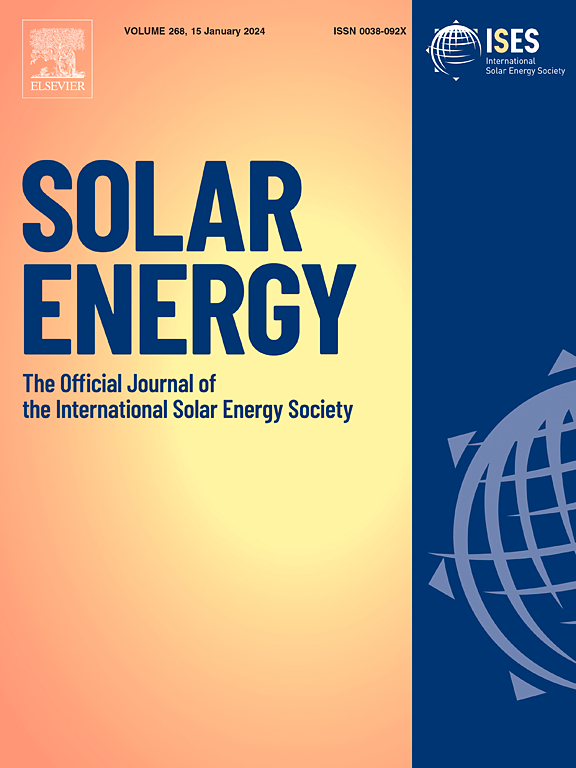Spectral irradiance correction of photovoltaic energy yield predictions in six high-latitude locations with measured spectra
IF 6
2区 工程技术
Q2 ENERGY & FUELS
引用次数: 0
Abstract
As solar power is expected to supply over 16% of the world’s electricity mix by 2030, accurate energy yield prediction and forecasting is essential. The incident solar spectrum varies continuously, causing energy prediction error as sunlight deviates from the reference spectrum. This work quantifies spectral error in bifacial photovoltaic energy yield predictions, demonstrating instantaneous spectral impacts of −45% to +32% and annual impacts from +0.7% to +2.7% on energy yield. This work presents solar spectral impact analysis for seven North American locations (39.7–69.1°N). We apply measured spectra to bifacial fixed-tilt silicon modules using a 2D view-factor model. Ground-reflected and diffuse irradiance cause the largest spectral errors while direct irradiance is best-matched to reference conditions. This study indicates that spectral correction methods should be applied for bifacial systems or in locations with high diffuse fractions above 35%, representing over 75% of Earth’s landmass. These effects indicate current PV system designs underestimate diffuse and ground-reflected irradiance contributions.
利用实测光谱对六个高纬度地区光伏发电量预测的光谱辐照度校正
预计到2030年,太阳能将提供超过16%的世界电力,因此准确的能源产量预测和预测至关重要。入射太阳光谱连续变化,由于太阳光偏离参考光谱,导致能量预测误差。这项工作量化了双面光伏发电量预测中的光谱误差,证明了对发电量的瞬时光谱影响为- 45%至+32%,年影响为+0.7%至+2.7%。这项工作提出了七个北美地区(39.7-69.1°N)的太阳光谱影响分析。我们使用二维视因子模型将测量光谱应用于双面固定倾斜硅模块。地面反射和漫反射辐照度引起最大的光谱误差,而直接辐照度与参考条件最匹配。该研究表明,光谱校正方法应应用于双面系统或高漫射分数超过35%的位置,占地球陆地面积的75%以上。这些效应表明当前的光伏系统设计低估了漫反射和地面反射的辐照度贡献。
本文章由计算机程序翻译,如有差异,请以英文原文为准。
求助全文
约1分钟内获得全文
求助全文
来源期刊

Solar Energy
工程技术-能源与燃料
CiteScore
13.90
自引率
9.00%
发文量
0
审稿时长
47 days
期刊介绍:
Solar Energy welcomes manuscripts presenting information not previously published in journals on any aspect of solar energy research, development, application, measurement or policy. The term "solar energy" in this context includes the indirect uses such as wind energy and biomass
 求助内容:
求助内容: 应助结果提醒方式:
应助结果提醒方式:


